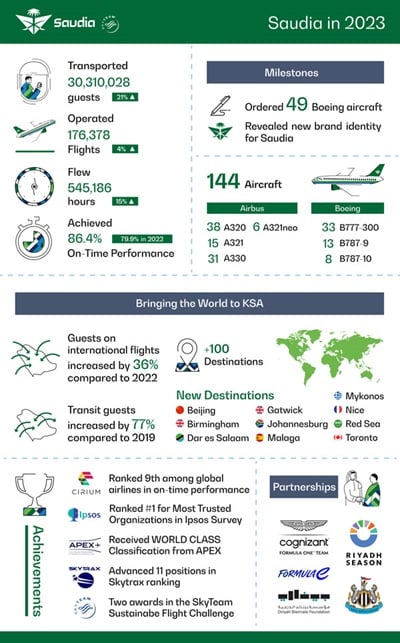DUBAI, United Arab Emirates (eTN) – When Jean-Claude Baumgarten, president of the World Travel and Tourism Council, sounded as though he was just joking, he truly wasn’t. He warned the US to take heed of the signs of the times sometime in January. He left with this remark: “In the past, when America sneezes, Europe catches a cold and the rest of the world dies of pneumonia. Today, the US sneezes, the rest of the world goes shopping,” he cracked. He could not be far from today’s actuals.
Former US ambassador Philip Lader, chairman WPP Group and senior advisor for Morgan Stanley, did not sound exactly worry-free about the economic slowdown in the US. “The worst may be over; but watch out for the after shocks…The after shock of this crisis will impact our market and the global marketplace for years to come,” said the former US diplomat based in the UK.
Indeed with the US economy hanging on a balance, developments in Asia and the Middle East led by Dubai outweigh the glut across the Atlantic.
According to HVS managing director Russell Kett, despite the trouble in the US, robust occupancy and RevPar will dominate in the mid-East region. This, despite increasing supply, he said during the last Arabian Hotel Investment Conference in Dubai.
“GOPPar [Gross Operating Profit per Available Room] between 2006 and 2007 shows growth in profitability from $96 to $111 while RevPar goes up 20 percent across the region, staying positive over three years, led by Dubai with a 10-25 percent rise experienced early ‘08. However, a considerable decline in Beirut (because of instability) where occupancy has fallen from 48 percent to 39 percent in 2007 and in Kuwait where limited demand generated occupancy from 65 percent to 58 percent is being seen. GOPPar slid in Beirut due to decreased RevPar and in Hurghada where profitability has weakened year on year,” Kett said.
Despite the US meltdown, the Middle East still reports the biggest change, some 13.2 percent year on year from 2006/2007 as a result of visitor arrivals and rising airport passengers – as air travel, new routes and budget carriers grow. Growth in supply in countries in the region is increasing phenomenally with Dubai leading the countries with 75 percent of supply growth in the Middle East attributed to this emirate alone — translating into 60,000 to 80,000 new rooms in Dubailand, serviced apartments and budget hotels.
Arthur de Haast, Global CEO, Jones Lang LaSalle Hotels, said that although investments in the US as well as in Europe stay muted, bucking the trend is the Middle East with over $3 billion invested in the hotel investment market alone over the last months. Dubai, Abu Dhabi and Doha continue to attract significant international capital driven by the relatively higher yielding tax-free investment opportunities and real estate regulatory environment. “Real estate and money markets are witnessing increased volume of international capital targeting the Arabian Gulf. As the region further develops, investors and developers are being attracted to some of the largest projects in the world,” he said. The US is out of the race, it appears.
Jones Lang Lasalle reports that $1.3 trillion worth of projects is currently under development in the GCC (Gulf Cooperating Council) and more than 35 percent of investments are earmarked for Dubai. Competition for international dollars and individual investors is becoming a key concern for developers across the region. This rush of money, or the need for it came about due to a shortage of accommodation supply caused by delays in delivery bringing forth a demand-pull inflationary pressure on residential prices in Dubai.
In the Middle East, most capital is being sourced in the region, said Lader. “Little sign in reversing oil-induced liquidity and financial leverage being comparatively low make investors seem confident that Middle East hotel demand will continue to grow. The Mid-East will attract more capital as investors chase higher yields and a more buoyant economy,” added Lader.
With the region’s population having doubled to about 280 million over the last decades, in the next 12 years, there will be another 50 percent increase to 410 million. Can the region’s economy achieve or sustain adequate investment rates and income growth to absorb all these labor?
The impact to Middle East hotel transactions will soon include more expensive debts, lower loan to value ratios slowing markets in US and Europe, heightened activity from new sources of investment capital including sovereign wealth funds and Asia Pacific investors, and more traditional sources of capital from investment institutions, REITs and private equity funds based in more mature financial markets, forecast Lader.
For now, De Haast however thinks the Middle East market will not face grave difficulty, saying equity will be in plentiful supply and debt will remain inexpensive. He added, “The region’s global hotel ownership is set to accelerate outbound hotel capital flows with year to date amounts pegged at $3.5 million. Intra-regional investments of capital is led by the UAE at 81 percent of investments in the region, followed by Saudi Arabia,” he said.
Sharing his hotel investment outlook, de Haast economic slowdown in established markets will see RevPar growths slowing; cost inflation will become more notable; business confidence will slowdown in corporate travel, and investment volumes will go down significantly.
In mature markets such as the US, buyers and sellers are only waiting for market direction. Markets are not distressed; they are only inactive, said de Haast placating the US concerned many.
If there were any powerful markets to check out, it’s India and China who will impact the global marketplace and not the US. India and China are headed for a 49 percent share of world GDP in 2025.They currently represent more than 1/3 of the world population; by 2015, Asia Pacific will represent 2/3 of the world population, by 2030 they will account for 30 percent. These circles will have considerable impact in the Middle East own ever-increasing circles.
Sadly, the gap between economic and government organizations in the nations of the world is getting wider as economies become more globalized. ” Governments risk losing standing with their own people by doing what they think they need to do to protect citizens’ best interest. In the US, there is an increasing call for protectionism, which is certainly reflected in the Middle East political situation,” said Lader adding that these trends demand renewed thinking from the world’ multinational companies and investors.
WHAT TO TAKE AWAY FROM THIS ARTICLE:
- Arthur de Haast, Global CEO, Jones Lang LaSalle Hotels, said that although investments in the US as well as in Europe stay muted, bucking the trend is the Middle East with over $3 billion invested in the hotel investment market alone over the last months.
- Growth in supply in countries in the region is increasing phenomenally with Dubai leading the countries with 75 percent of supply growth in the Middle East attributed to this emirate alone —.
- This rush of money, or the need for it came about due to a shortage of accommodation supply caused by delays in delivery bringing forth a demand-pull inflationary pressure on residential prices in Dubai.






















